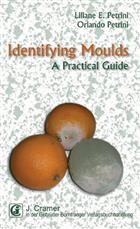Identifying Moulds: A Practical Guide
- Publisher : J. Cramer
- Illustrations : 37 figs, 12 tables
Our customers have not yet submitted a review for this title - click here to be the first to write a review
Description:
An introduction to the procedures to be followed for the identification of the most common and important genera of moulds. This first English edition is based on the third German edition of Schimmelpilze und deren Bestimmung by the same authors. It has been revised and updated. Identification keys were expanded to include dermatophytes and some clinically important, opportunistic mould genera.
The authors present the fundamentals of mycology and fungal taxonomy necessary to understand and use the methods described. Keys allowing the identification of the most common mould genera are included, with reference to more specialized identification literature, and a glossary of the most relevant mycological terms is also provided. The morphological characters typical of the different fungal groups are outlined and should facilitate the use of the keys.
The book focuses on genera that are frequently found in the environment, are common plant pathogens, involved in food spoilage, or may be isolated from human and animal tissues as opportunistic pathogens.
No previous knowledge of fungi is expected. Very basic information on mycology, concise descriptions of taxonomic schemes, of the methods to be used for identification of fungi, practical information on culture media as well as some ad vice for handling moulds and elementary safety issues are provided. An outline of the significance of fungi for public health and an extensive bibliography rounds up the volume.
This book may be useful to all students, health authorities, built environment biologists and evaluators, and lab technicians. It aims to help finding a way in the complicated taxonomic world of microscopic fungi.
You may also like...
Close Encounters of the Fungal Kind: In Pursuit of Remarkable Mushrooms
Fortey, R.
Price £18.99
(Save £6.01)










